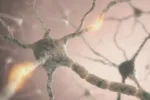The Difference Between Opium and Heroin: An Educational Insight

Though the two substances are closely related, opium and heroin have distinct properties, effects, differences and risks. Understanding the difference between these two drugs is crucial, especially considering the significant health and legal implications associated with their use. This blog aims to educate readers on the fundamental differences between opium and heroin.
Opium: The Natural Precursor
Opium is a naturally occurring substance derived from the sap of the opium poppy or Papaver somniferum. For thousands of years, opium has been used for both medicinal and recreational purposes. Opium is harvested by making incisions in the poppy capsules and collecting the sap that oozes out, which then dries into a resin.
The primary active components in opium are alkaloids, including morphine and codeine, both of which have significant pain-relieving properties. In its natural form, opium can be smoked, eaten or drunk in tea. Opium’s effects include pain relief, sedation and euphoria. It also has a high potential for addiction and abuse.
Heroin: A Potent Derivative
Heroin is a semi-synthetic drug derived from morphine, one of the primary components of opium. In the late 19th century, heroin was synthesized from morphine as an attempt to create a less addictive alternative for pain relief. Ironically, heroin turned out to be far more potent and addictive than morphine.
Heroin usually appears as a white or brown powder or as a black sticky substance known as “black tar heroin.” It can be injected, snorted or smoked. Upon entering the brain, heroin is converted back into morphine, binding rapidly to opioid receptors and producing intense feelings of pleasure and euphoria. This intense effect contributes to the high risk of addiction and overdose associated with heroin use.
Comparing Effects and Risks of Opium vs Heroin
Due to their action on the brain’s opioid receptors, opium and heroin produce similar effects, such as pain relief, drowsiness and euphoria. However, heroin is significantly more potent than natural opium. This increased potency means that the risk of heroin overdose and addiction is much higher than that of opium. Heroin use can lead to severe health issues, including lung complications, mental disorders and increased risk of infectious diseases, particularly when injected.
Legal Status and Social Impact
Both opium and heroin are classified as Schedule I controlled substances under the Controlled Substances Act in the United States due to the high potential for abuse with no accepted medical use. However, some derivatives of opium, like morphine and codeine, are regulated and used medically for pain management.
The social impact of heroin is particularly devastating. Heroin is associated with high rates of criminal activity, economic burden and substantial public health challenges. The opioid epidemic, driven in part by heroin and synthetic opioids, has become a major public health crisis.
Understanding the differences between opium and heroin is essential in the broader context of drug use, addiction and public health. While both substances have similar origins and effects, heroin’s enhanced potency and risk profile make it particularly dangerous. Education and awareness are key in addressing the challenges posed by these substances, especially in the context of the ongoing opioid crisis. For those struggling with addiction, seeking professional help is critical for recovery and rehabilitation.






